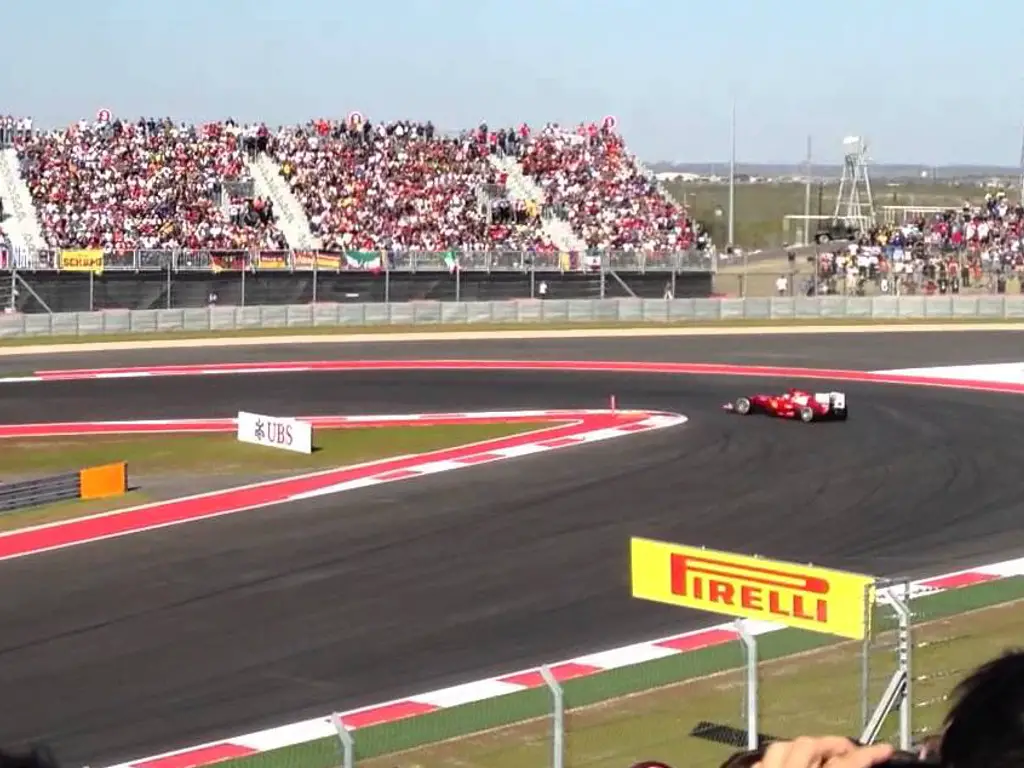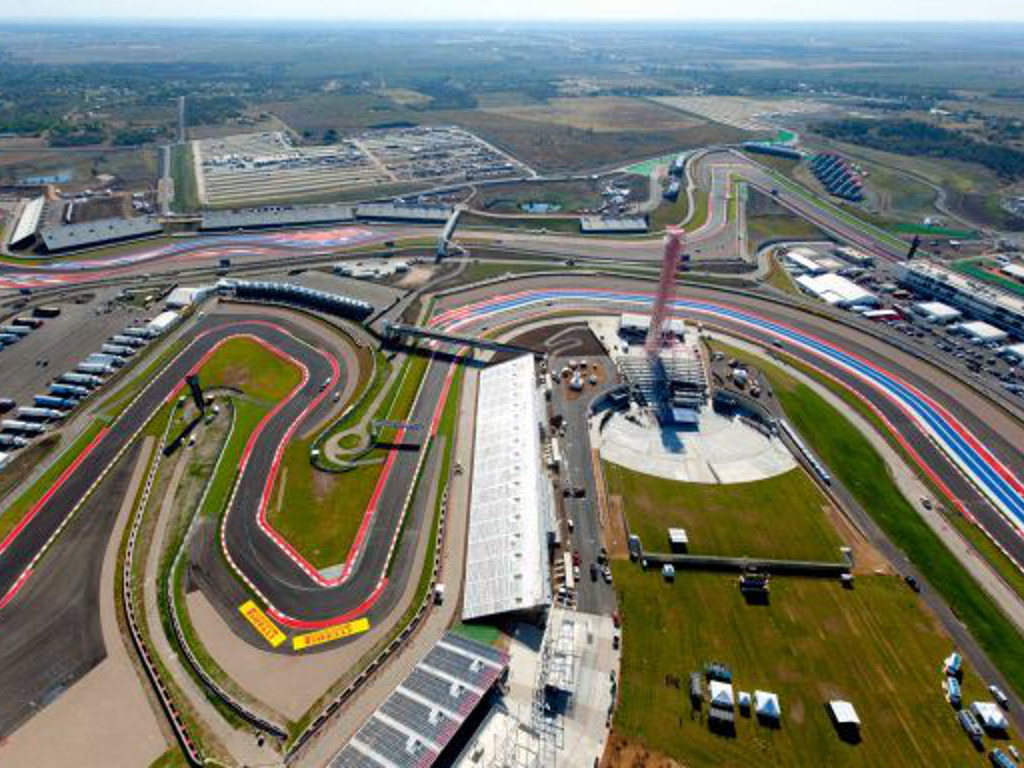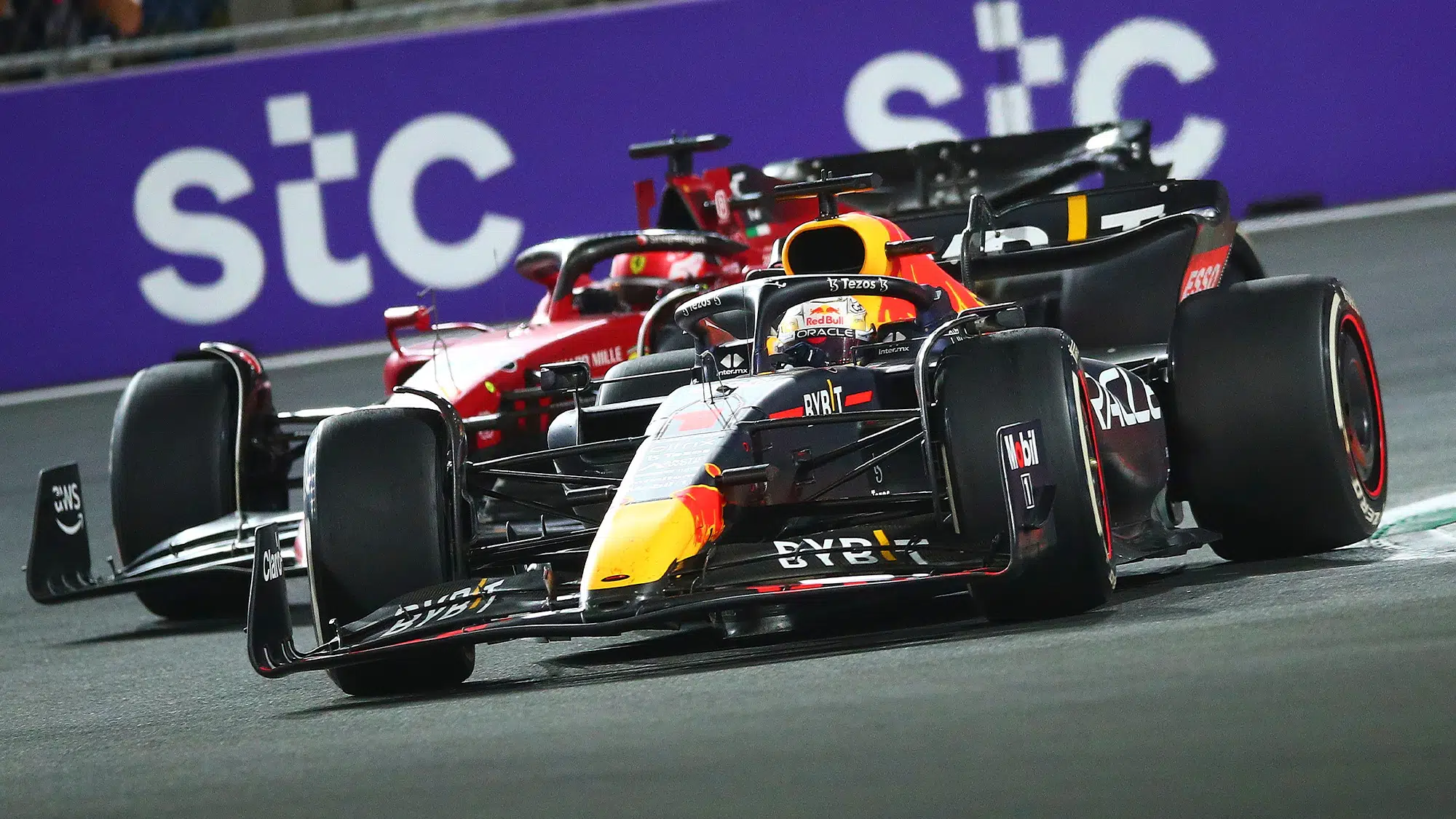United States Grand Prix is held at the Circuit of the Americas (COTA) which is a world-class motorsports and entertainment venue. It is located in Texas near the city of Austin.
German architect and circuit designer Hermann Tilke, designed the layout. Former motorcycle world champion Kevin Schwantz assisted him. To say that Hermann is the “go to” guy to design circuit is an understatement.
Since 1996 he has designed 53 racing circuits around the world.
| Year | Circuit | Location |
|---|---|---|
| 1996 | Austria A1 Ring | Spielberg, Styria, Austria |
| 1999 | Malaysia Sepang International Circuit | Sepang District, Selangor, Malaysia |
| 2001 | Germany Sachsenring | Hohenstein-Ernstthal, Saxony, Germany |
| 2002 | Germany Nürburgring | Nürburg, Rhineland-Palatinate, Germany |
| Germany Hockenheimring | Hockenheim, Baden-Württemberg, Germany | |
| 2004 | Bahrain Bahrain International Circuit | Sakhir, Southern Governorate, Bahrain |
| China Shanghai International Circuit | Jiading District, Shanghai, China | |
| 2005 | Japan Fuji Speedway | Oyama, Suntō District, Shizuoka Prefecture, Japan |
| Turkey Istanbul Park | Tuzla, Istanbul, Marmara Region, Turkey | |
| 2006 | Mexico Cancún | Cancún, Quintana Roo, Mexico |
| China Jingkai Street Circuit | Yizhuang, Beijing, China | |
| 2007 | Spain Circuit de Barcelona-Catalunya | Montmeló, Catalonia, Spain |
| Romania Bucharest Ring | Bucharest, Romania | |
| United States Colorado Motorsports Country Club Circuit | Colorado, United States | |
| 2008 | Singapore Marina Bay Street Circuit | Marina Bay, Singapore |
| Latvia Kandavas Kartodroms | Kandava, Latvia | |
| Spain Valencia Street Circuit | Valencia, Spain | |
| 2009 | Indonesia Lippo Village International Formula Circuit | Lippo Karawaci, Tangerang, Banten, Indonesia |
| United Arab Emirates Yas Marina Circuit | Yas Island, Abu Dhabi, United Arab Emirates | |
| Spain Ciudad del Motor de Aragón | Alcañiz, Aragon, Spain | |
| 2010 | Republic of Ireland Dublin Street Circuit | Dublin, Ireland |
| South Korea Korea International Circuit | Yeongam, South Jeolla Province, Honam, South Korea | |
| Kazakhstan Kazakhstan Motorcity | Kazakhstan | |
| United States Atlanta Motorsports Park | Dawson County, Georgia, United States | |
| Norway Oslofjord Panoramic Racepark | Oslofjord, Oslo, Eastern Norway, Norway | |
| 2011 | Norway Rudskogen Motorpark | Rakkestad, Østfold, Norway |
| India Buddh International Circuit | Greater Noida, Uttar Pradesh, India | |
| 2012 | Russia Moscow Raceway | Volokolamsk, Moscow Oblast, Russia |
| United States Circuit of the Americas | Austin, Texas, United States | |
| Russia Sibirian Ring | Novosibirsk, Novosibirsk Oblast, Russia | |
| 2013 | United States Port Imperial Street Circuit | New Jersey, United States |
| Chile Autodromo y Centro Cultural Motorpark | Chile | |
| Germany Bilster Berg | Bad Driburg, North Rhine-Westphalia, Germany | |
| 2014 | Russia Sochi Autodrom | Sochi, Krasnodar Krai, Russia |
| Croatia Osijek – Tvrđa | Osijek and Tvrđa, Croatia | |
| Croatia Bistra – Zagreb | Bistra and Zagreb, Croatia | |
| Thailand Chang International Circuit | Buriram, Thailand | |
| 2015 | Germany Mercedes-Benz Arena Temporary Track | Stuttgart, Baden-Württemberg, Germany |
| Mexico Autódromo Hermanos Rodríguez | Mexico City, Mexico | |
| 2016 | Canada Vancouver Island Motorsport Circuit | Duncan, British Columbia, Canada |
| Morocco Circuit International Automobile Moulay El Hassan[13] | Marrakech, Marrakesh-Safi, Morocco | |
| Azerbaijan Baku City Circuit | Azadliq Square, Baku, Azerbaijan | |
| 2017 | Indonesia Jakabaring International Circuit | Palembang, South Sumatra, Indonesia |
| Indonesia Sentul International Circuit | Bogor, West Java, Indonesia | |
| 2018 | Philippines Pradera Verde Racing Circuit | Lubao, Pampanga, Central Luzon, Philippines |
| China V1 Auto World | Tianjin, China | |
| 2019 | Kuwait Kuwait Motor Town | Ali Sabah Al Salem, Ahmadi Governorate, Kuwait |
| Russia Igora Drive | Priozersk, Leningrad Oblast, Russia | |
| 2020 | Vietnam Hanoi Street Circuit | Nam Từ Liêm, Hanoi, Vietnam |
| Indonesia Jakarta Monument Street Circuit | Jakarta, Indonesia | |
| 2021 | Saudi Arabia Jeddah Corniche Circuit | Jeddah Corniche, Jeddah, Saudi Arabia |
| 2023 | Kazakhstan Sokol International Racetrack | Sokol, Almaty, Kazakhstan |
| United States Las Vegas Street Circuit | Las Vegas, Nevada, United States |
What are the features that define the Circuit of The Americas?
The circuit features a variety of challenging corners and elevation changes. Inspiration is from some the most iconic tracks in the world.
It features a variety of corners inspired by some of the most famous circuits in the world. COTA starts with a steep uphill run into Turn 1 and a long back straight with a heavy braking zone.
It is the only purpose-built facility in the U.S and hosts the following events.
- The Formula One United States GP
- MotoGP
- NASCAR
- IndyCar
Here is a corner-by-corner guide to the 5.513 km circuit that features 20 turns.
United States Grand Prix – COTA Layout

United States Grand Prix (COTA): Big Hill

Turn 1 is a sharp left-hander that marks the end of the main straight. The drivers approach it at over 320 km/h and brake hard to take it in third gear at around 100 km/h.
The corner is located at the top of a 40-meter elevation change, making it blind and tricky to judge. The corner also has a wide entry and exit, allowing for different lines and overtaking opportunities.
United States Grand Prix (COTA): S Curves
Turns 2-6 are a series of fast and flowing corners that form an S-shaped sequence. The drivers take them in fifth or sixth gear at around 200 km/h, changing direction rapidly and using the kerbs as much as possible.
The corners are inspired by the Maggotts-Becketts section at Silverstone, and require precision, commitment and aerodynamic efficiency.
United States Grand Prix (COTA): Hairpin
Turn 7 is a tight right-hander that requires heavy braking and good traction. The drivers slow down to around 80 km/h and take it in second gear, aiming for a late apex and a smooth exit.
Turn 11 hairpin at Istanbul Park is used as the inspiration for this corner.
United States Grand Prix (COTA): Esses
Turns 8-9 are a pair of medium-speed left-handers that follow Turn 7. The drivers take them in fourth gear at around 160 km/h, using the full width of the track and clipping the apex kerbs.
The corners are inspired by the Turns 5-6 esses at Suzuka, and challenge the drivers’ balance and grip.
United States Grand Prix (COTA): Kink
Turn 10 is not really a corner, but a flat-out kink to the right that leads into Turn 11. The drivers stay on full throttle and reach speeds of over 300 km/h before braking hard for the next corner.
United States Grand Prix (COTA): Hairpin

Turn 11 is another tight right-hander that requires heavy braking and good traction. The drivers slow down to around 80 km/h and take it in second gear, aiming for a late apex and a smooth exit.
The corner is similar to Turn 7, but has a downhill entry and an uphill exit, making it easy to lock up or run wide.
COTA: Stadium Section
Turns 12-15 are a complex of slow corners that form a stadium section. The drivers take them in second or third gear at around 100 km/h, trying to position the car for the best line and balance.
The corners are inspired by the stadium section at Hockenheim and create a spectacular atmosphere for both drivers and fans.
United States Grand Prix: Quadruple Apex
Turn 16 is a long right-hander that has four apexes. The drivers take it in fourth gear at around

180 km/h, using the full width of the track and clipping the apex kerbs. The corner is inspired by the Turn 8 quadruple apex at Istanbul Park, and requires a smooth steering input and a consistent throttle application.
United States Grand Prix: Kink
Turn 17 is not really a corner, but a flat-out kink to the left that leads into Turn 18. The drivers stay on full throttle and reach speeds of over 300 km/h before braking hard for the next corner.
COTA: Hairpin
Turn 18 is a tight left-hander that requires heavy braking and good traction. The drivers slow down to around 80 km/h and take it in second gear, aiming for a late apex and a smooth exit.
The corner is similar to Turn 11, but has an uphill entry and a downhill exit, making it easy to lock up or run wide.
COTA: Sweeper
Turn 19 is a fast left-hander that follows Turn 18. The drivers take it in fifth gear at around 200 km/h, using the full width of the track and clipping the apex kerb.
The corner has a negative camber and an off-camber exit, making it easy to understeer or run wide.
Final Corner
Turn 20 is a medium-speed right-hander that marks the end of the lap. The drivers slow down to around 140 km/h and take it in third gear, aiming for a late apex and a smooth exit. The corner has a positive camber and a wide exit, allowing the drivers to carry a lot of speed onto the main straight.
References
F1worldwide.com also recommends the Following
- The Ultimate Guide to the United States GP and the Circuit of the Americas
- The Ultimate Guide to the Mexican Grand Prix
- The Mexican GP – An Exciting Corner by Corner Drive Through
Enjoy the latest F1 News in your desk every Monday morning – Subscribe to Our Newsletter Now – it’s FREE!
So, what are you waiting for? Join the F1worldwide.com community of devoted F1 enthusiasts. Subscribe now and embark on a thrilling journey through the high-speed world of Formula 1. Get ready for a monthly dose of adrenaline, insights, and insider stories straight from the F1 track to your inbox. Sign up today and never miss a beat in the fast-paced world of F1!”

